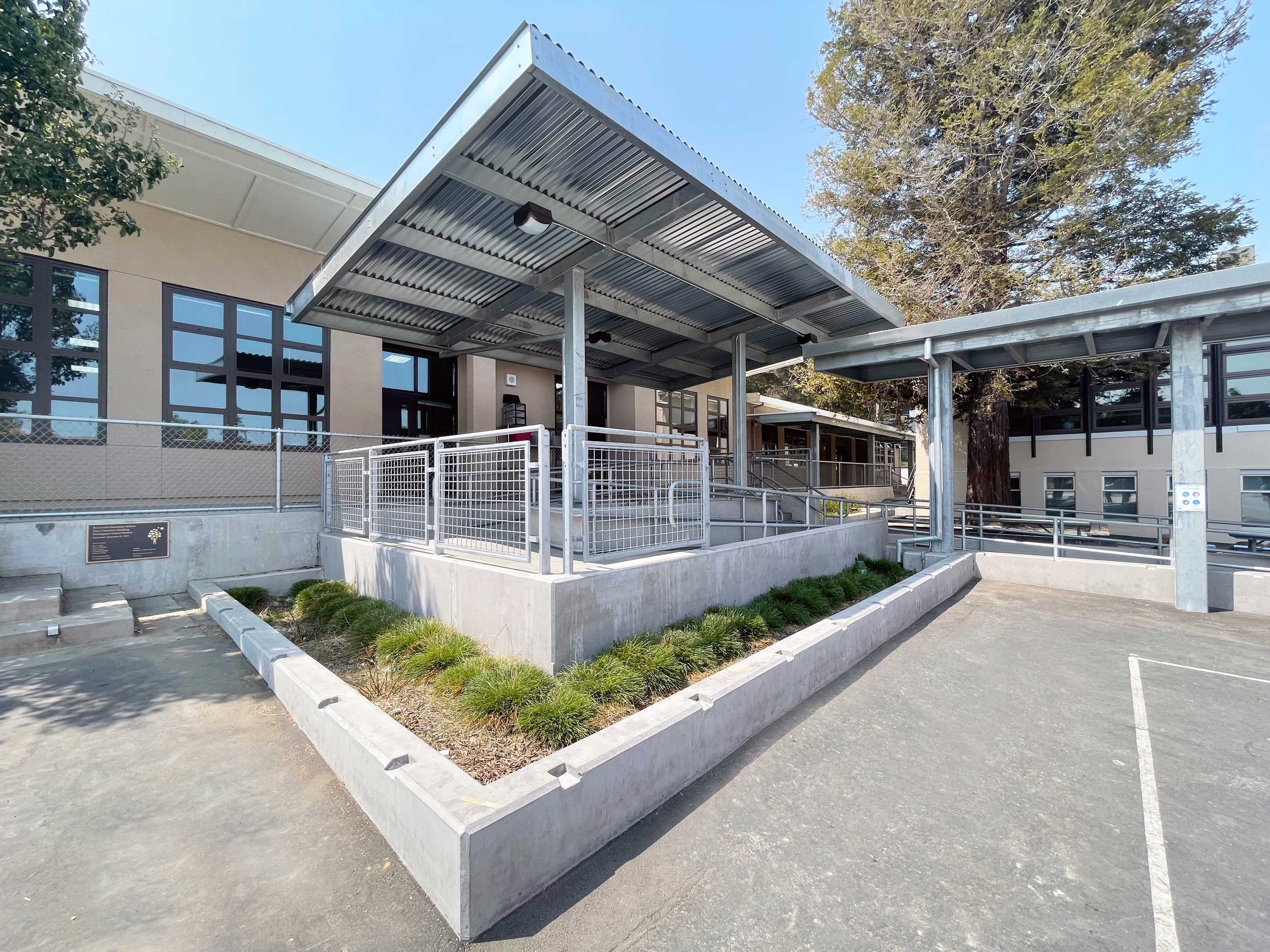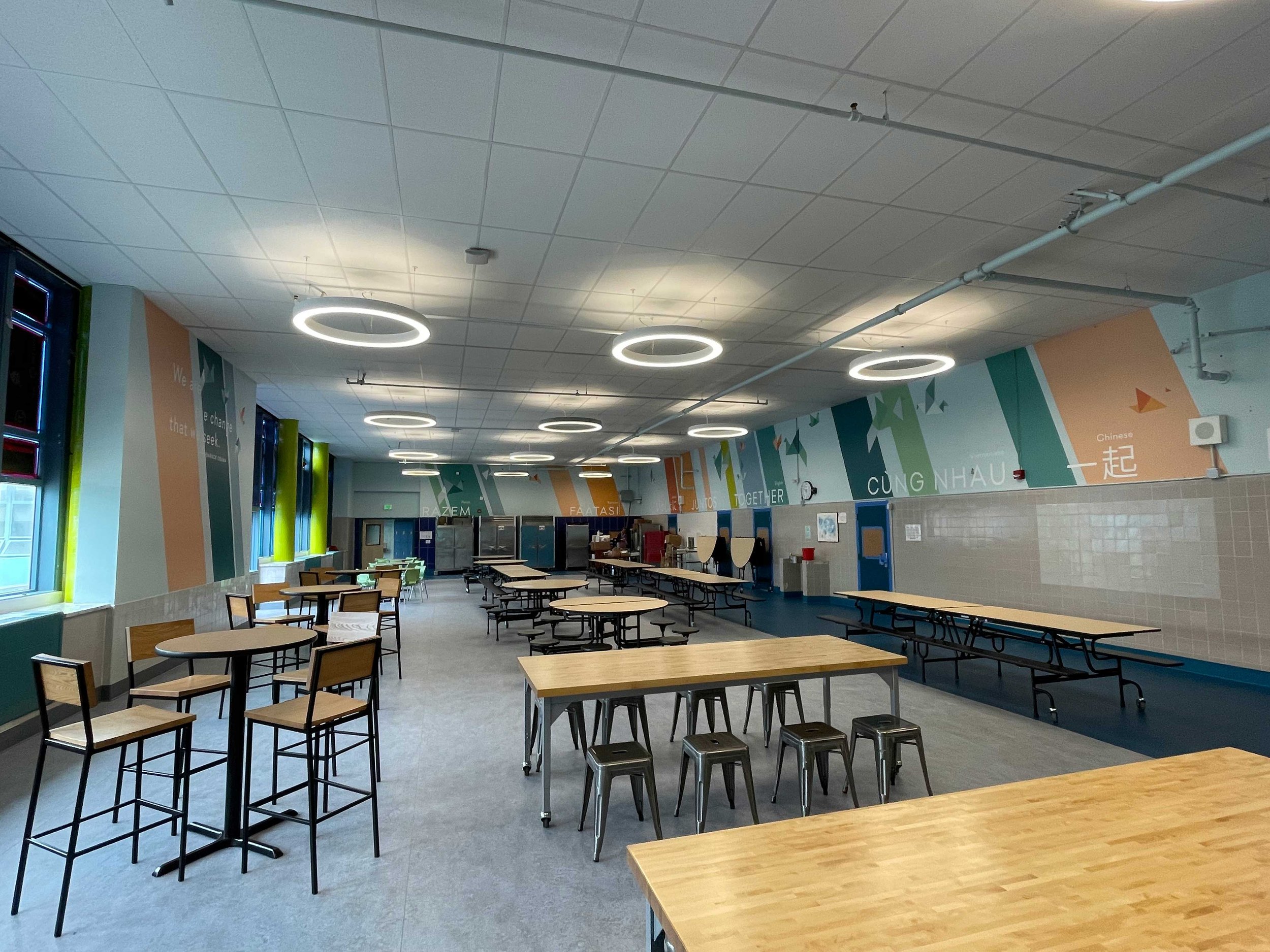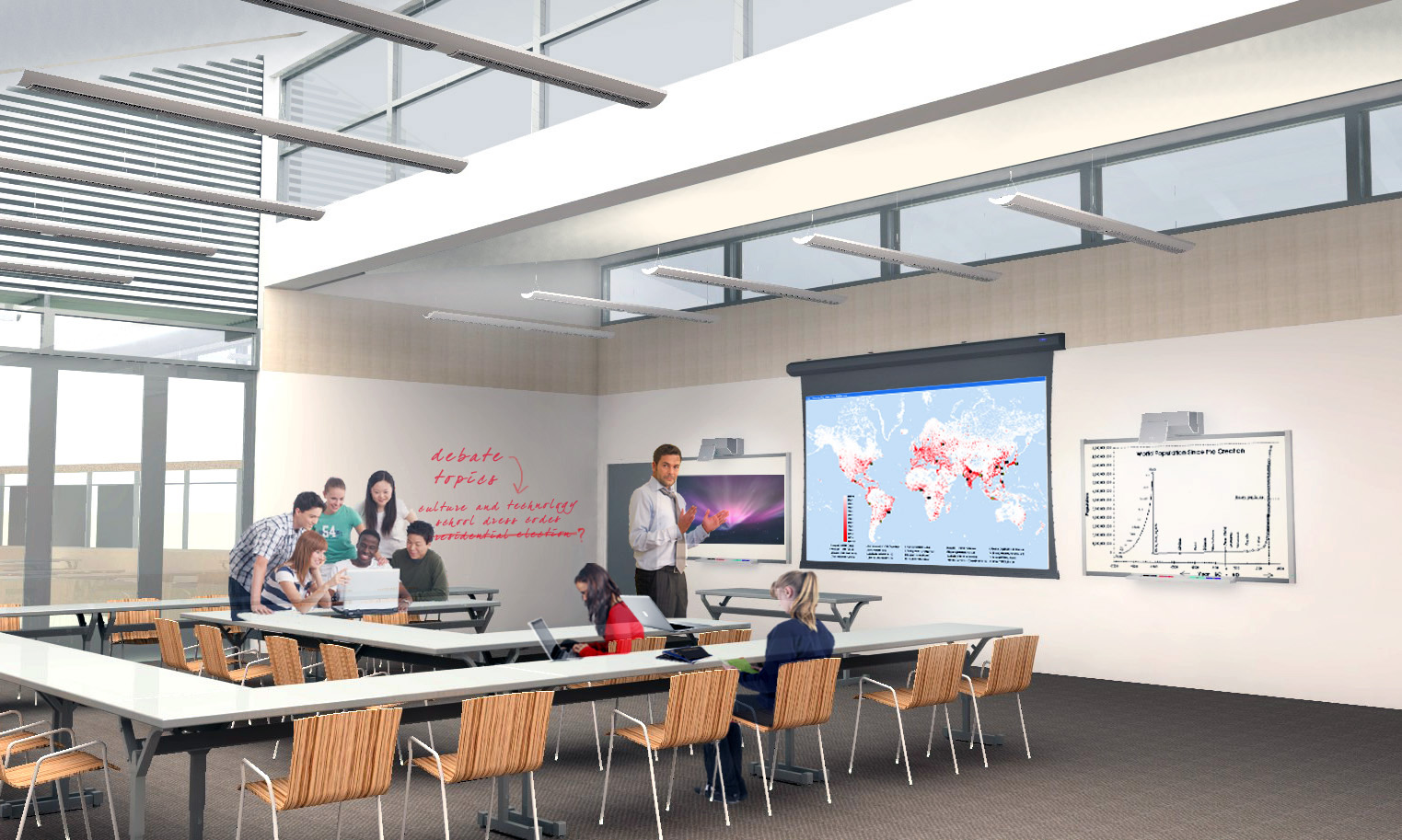School design should reflect new ways of learning, new goals of education, and new ways to teach. Schools need to reflect the educational vision of their communities, and the educators who are responsible for making education happen.
A school should be a tool for teaching – school buildings should help teachers, not get in their way. Classrooms need to support a variety of learning styles and teaching preferences so that all learners have a better chance to excel.
Older schools need work to improve their physical condition and make them more useful for today’s students and teachers. Modernizing schools can extend the life of existing school buildings, save resources and preserve community investment. All schools should be places for 21st-century learning.
Schools can teach about saving energy and water – we emphasize using natural light in classrooms, and providing high air quality and acoustics, because these elements are proven to enhance student performance. Other conservation measures can reduce operating costs, and help schools spend more on learning and less on fossil fuels.
Over the next thirty years, more energy will be used at schools that have already been built, than by all the new school buildings that will be constructed between now and then. We need to modernize older schools to reduce their use of fossil fuels and water – every existing school should have a transition plan showing the path toward reduced energy and water use.


















